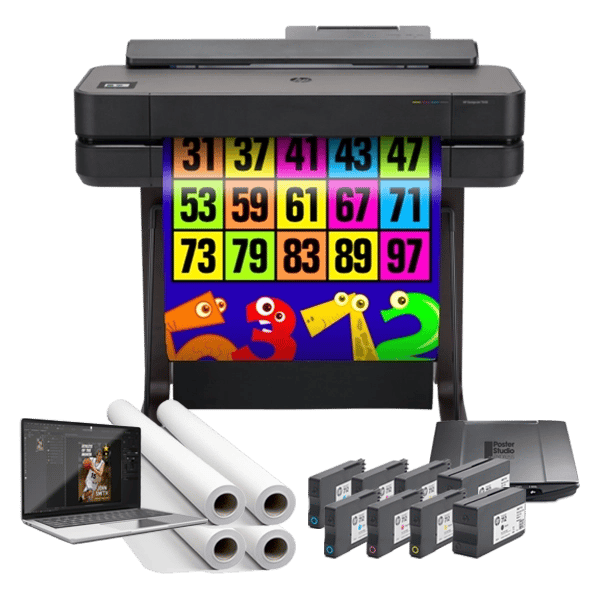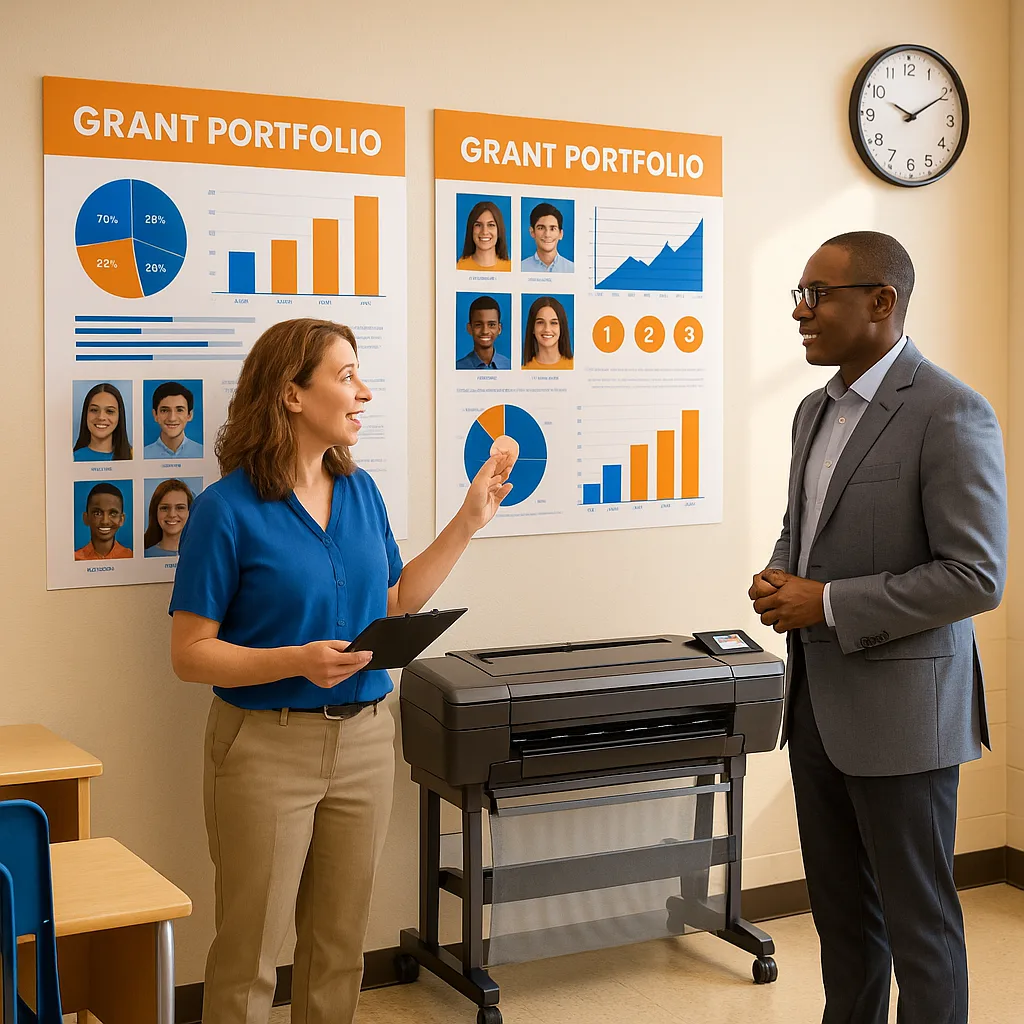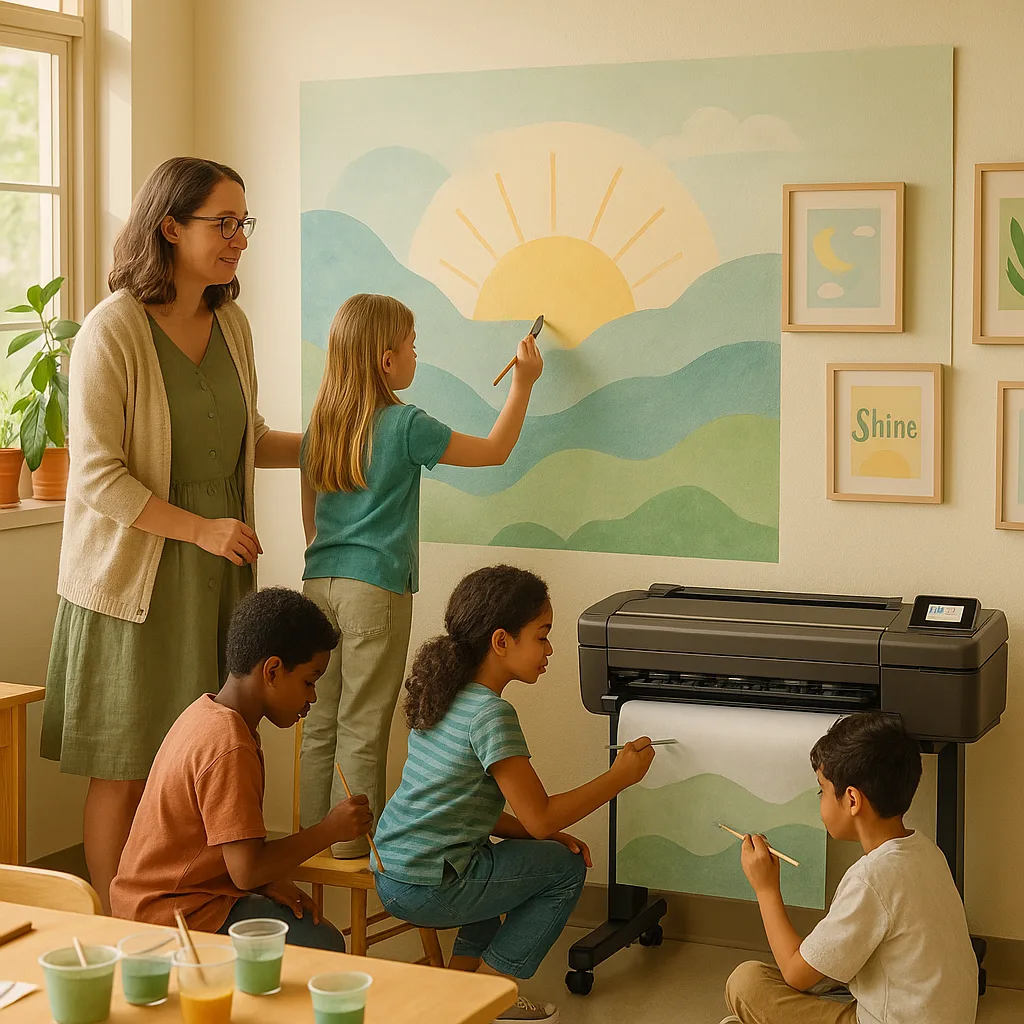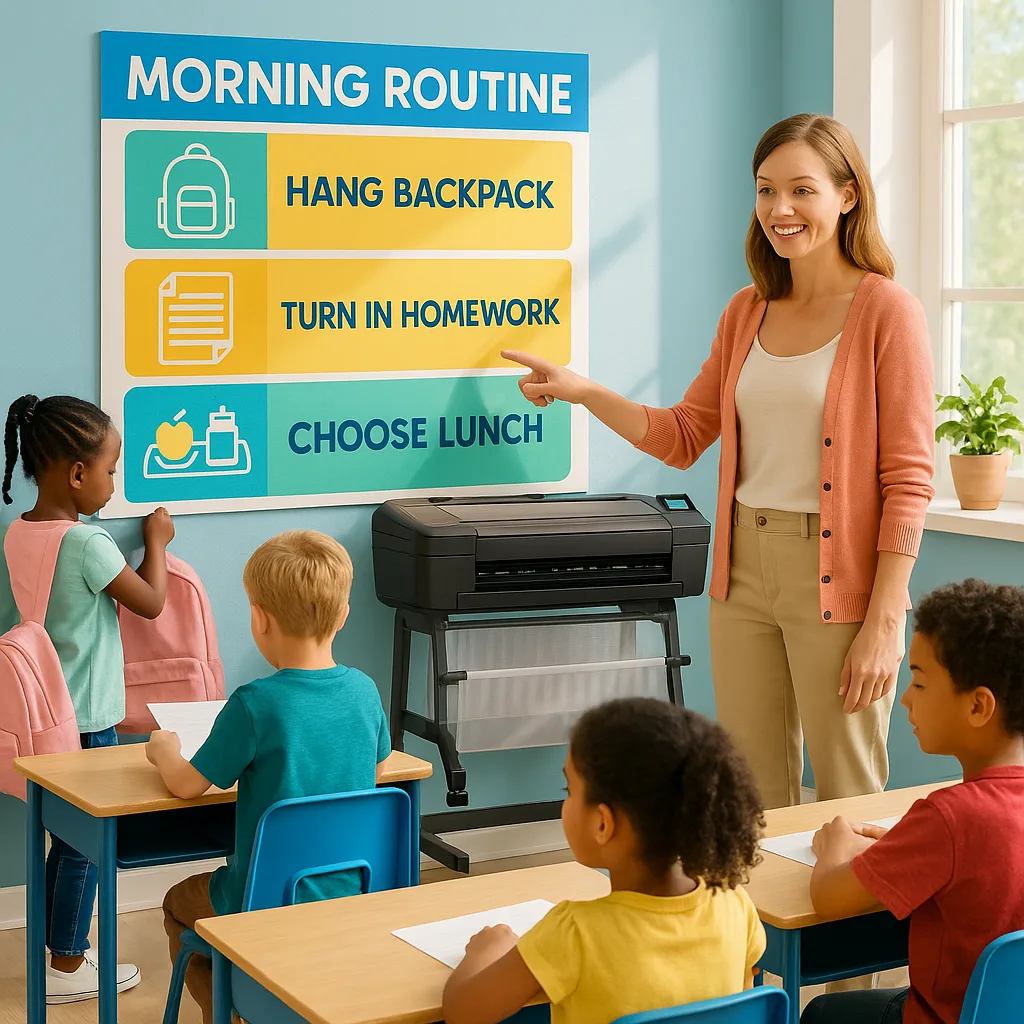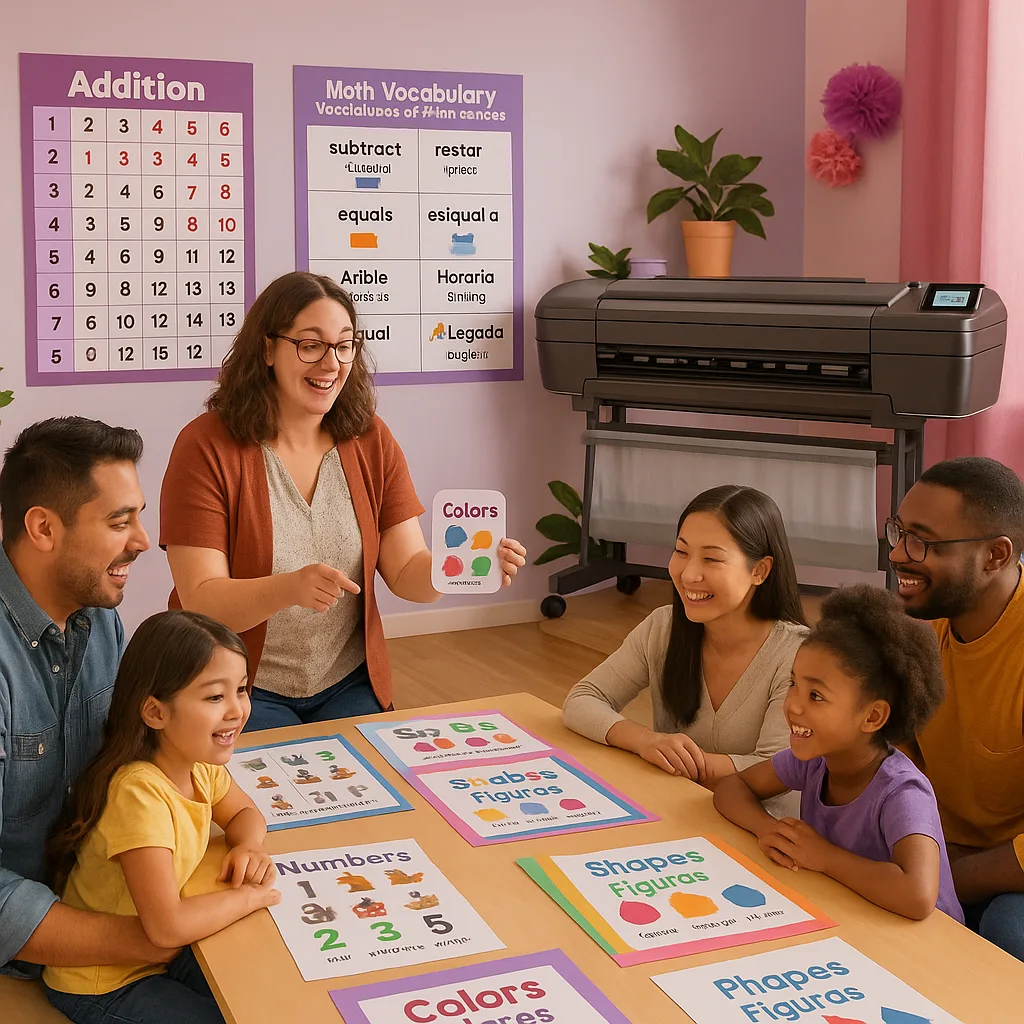
In an era where school emergencies can unfold in seconds, California educators are discovering that a poster printer for schools emergency communication serves as more than just a convenience—it becomes a critical lifeline. Recent state mandates requiring multilingual crisis materials and inclusive evacuation procedures have transformed how districts approach visual safety systems. Yet most schools remain dangerously underprepared for creating the comprehensive signage needed when every second counts.
Building Your School’s Visual Crisis Infrastructure
Emergency management professionals across California emphasize that effective crisis communication starts long before any incident occurs. Dr. Maria Hernandez, Emergency Services Coordinator for San Diego County Schools, notes that visual systems must address three critical phases: immediate response, sustained management, and family reunification. Each phase demands distinct signage types that standard printing services simply cannot deliver with the speed and customization required.
Traditional approaches relying on pre-printed generic materials fail to account for your school’s unique layout, student populations, and community languages. Moreover, emergency protocols evolve constantly based on new threats, regulatory updates, and lessons learned from actual incidents. This dynamic environment requires schools to maintain in-house capability for rapid poster production and updates.

Essential Components of Visual Emergency Systems
A comprehensive visual emergency system encompasses far more than basic exit signs. California’s updated School Safety Plan requirements mandate specific visual elements that address diverse student needs and community characteristics. These components work together to create a cohesive communication framework that functions even when verbal instructions become impossible.
of California schools lack adequate multilingual emergency signage
seconds average time to locate emergency information
more effective communication with visual systems
Critical Signage Categories for Poster Printer for Schools Emergency Communication
Evacuation Route Maps: Every classroom, hallway, and common area requires customized evacuation maps showing primary and secondary routes. These maps must account for mobility limitations, include visual landmarks for non-readers, and display instructions in community languages. Recent fire incidents in Northern California schools revealed that generic maps caused dangerous confusion when students couldn’t identify their specific location.
Special Needs Accommodation Signage: Federal ADA requirements mandate clear identification of accessible routes, safe areas for students with mobility devices, and sensory-friendly spaces during emergencies. Furthermore, these signs must use universally recognized symbols alongside text to ensure comprehension across language barriers and cognitive abilities.
Reunification Point Markers: Parent-student reunification represents one of the most chaotic phases of any school emergency. Clear, numbered reunification zones with corresponding parent instruction posters streamline this process significantly. Successful implementations at Los Angeles USD demonstrate how proper signage reduces reunification time by up to 60%.
Create professional emergency signage instantly with the Education Express 24″ Package A
Tested Templates from Crisis-Ready Schools
Following the 2019 Ridgecrest earthquakes, several Kern County schools revolutionized their emergency communication systems using in-house poster printing capabilities. Their experiences provide valuable templates that other districts can adapt immediately. Principal Janet Rodriguez from Desert Willow Elementary shares, “Having our own poster maker machine for school allowed us to create site-specific materials that actually saved lives during our building evacuation.”
Elementary School Template Set
Animal-Themed Assembly Points: Young students respond better to “Meet at the Elephant” than “Assembly Point 3.” These colorful 36″ x 48″ posters feature large animals with corresponding safety instructions.
Buddy System Visual Guides: Picture-based posters showing proper hand-holding techniques and line formation help maintain order during evacuations without verbal instructions.
Parent Pickup Maps: Color-coded zones with matching wristbands streamline the reunification process while maintaining security protocols.
Secondary School Template Set
Multi-Building Navigation: QR-code enhanced maps allow students to quickly identify their location and nearest exit using smartphones during emergencies.
Shelter-in-Place Instructions: Department-specific posters detail chemical spill protocols for science labs, lockdown procedures for libraries, and severe weather responses for gymnasiums.
Staff Communication Boards: Incident command structure visuals with radio channels and phone trees ensure coordinated response across large campuses.
Implementation Strategy: From Planning to Practice
Successful emergency communication systems require methodical implementation that engages all stakeholders. Dr. Thomas Chen, Director of School Safety for Sacramento City USD, emphasizes that “poster creation represents just one element of a comprehensive approach that must include regular drills, community input, and continuous refinement based on exercise outcomes.”
Phase 1: Assessment
Conduct vulnerability analysis and identify communication gapsDetailed Planning
Map every area requiring signage, survey language needs, identify special accommodations, and establish update protocols. Include first responder input.Phase 2: Design
Develop standardized templates using proven formatsTemplate Creation
Create master templates incorporating school colors, clear fonts, universal symbols, and multiple languages. Test readability at various distances.Phase 3: Deploy
Print and install signage following safety protocolsStrategic Placement
Install at eye level, ensure visibility from all angles, laminate for durability, and document locations for maintenance tracking.Ready to Build Your Emergency Communication System?
Don’t wait for a crisis to expose communication gaps. Start creating your comprehensive visual emergency system today with professional-grade equipment designed for education.
Funding Your Emergency Communication Infrastructure with a Poster Printer for Schools Emergency Communication
Multiple funding streams support emergency preparedness initiatives in California schools. Title IV Part A explicitly includes provisions for school safety equipment, while emergency preparedness grants from CalOES often cover visual communication systems. Additionally, many districts successfully leverage LCFF supplemental funds when demonstrating how multilingual emergency signage serves English learners and foster youth.
Insurance carriers increasingly recognize the liability reduction achieved through comprehensive emergency signage, with some offering premium discounts for schools maintaining updated visual communication systems. Furthermore, parent organizations frequently support these initiatives through targeted fundraising once they understand the direct impact on student safety.
The Education Studio 36″ Duplicator Package A+ offers multifunction capabilities perfect for creating large-scale evacuation maps and scanning existing floor plans for modification. Meanwhile, schools seeking maximum flexibility might consider the Education Flex 30 Package B, which includes cutting capabilities for creating custom-shaped directional signage and window decals.
Remember that emergency preparedness represents an ongoing process rather than a one-time project. Regular updates reflecting facility changes, evolving threats, and lessons learned from drills ensure your visual communication system remains effective when seconds count. By investing in proper equipment and following proven templates, California schools can create emergency communication systems that protect every member of their community.
Transform your school’s emergency preparedness today. Call 866-788-7900 to speak with a safety specialist about creating your comprehensive visual crisis communication system.


